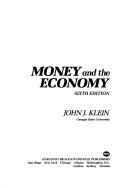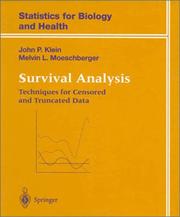Book
Year: 1970 Publisher: New York Harcourt, Brace and World
Abstract | Keywords | Export | Availability | Bookmark
 Loading...
Loading...Choose an application
- Reference Manager
- EndNote
- RefWorks (Direct export to RefWorks)
Book
Year: 1965 Publisher: New York Harcourt, Brace and World
Abstract | Keywords | Export | Availability | Bookmark
 Loading...
Loading...Choose an application
- Reference Manager
- EndNote
- RefWorks (Direct export to RefWorks)
Book
ISBN: 9780300135640 0300135645 Year: 2018 Publisher: New Haven Yale University Press
Abstract | Keywords | Export | Availability | Bookmark
 Loading...
Loading...Choose an application
- Reference Manager
- EndNote
- RefWorks (Direct export to RefWorks)
Between 1935 and his death at midcentury, Henri Matisse (1869-1954) undertook many decorative projects and commissions. These include mural paintings, stained glass, ceramic tiles, lead crystal pieces, carpets, tapestries, fashion fabrics, and accessories--work that has received no significant treatment until now. By presenting a wealth of new insights and unpublished material, including from the artist's own correspondence, John Klein, an internationally acclaimed specialist in the art of Matisse, offers a richer and more balanced view of Matisse's ambitions and achievements in the often-neglected later phases of his career. Matisse designed many of these decorations in the innovative - and widely admired - medium of the paper cut-out, whose function and significance Klein reevaluates. Matisse and Decoration also opens a window onto the revival and promotion, following World War II, of traditional French decorative arts as part of France's renewed sense of cultural preeminence. For the first time, the idea of the decorative in Matisse's work and the actual decorations he designed for specific settings are integrated in one account, amounting to an understanding of this modern master's work that is simultaneously more nuanced and more comprehensive.
Decorative arts --- History --- Matisse, Henri, --- Criticism and interpretation.

ISBN: 0155640070 Year: 1986 Publisher: San Diego Harcourt Brace Jovanovich
Abstract | Keywords | Export | Availability | Bookmark
 Loading...
Loading...Choose an application
- Reference Manager
- EndNote
- RefWorks (Direct export to RefWorks)
Finance --- Monetary policy --- Money
Book
Year: 1970 Publisher: Harcourt, Brace & World,
Abstract | Keywords | Export | Availability | Bookmark
 Loading...
Loading...Choose an application
- Reference Manager
- EndNote
- RefWorks (Direct export to RefWorks)
Book
ISBN: 1557507481 Year: 2023 Publisher: Annapolis, MD : Naval Institute Press,
Abstract | Keywords | Export | Availability | Bookmark
 Loading...
Loading...Choose an application
- Reference Manager
- EndNote
- RefWorks (Direct export to RefWorks)
"Fight for the Final Frontier uses the concepts associated with irregular warfare to offer new insights for understanding the nature of strategic competition in space. Today's most pressing security concerns are best considered using an irregular warfare lens because incidents and points of potential conflict fall outside the definition of armed conflict. While some universal rules of combat apply across all domains, conflict in space up-ends and flips those assumed standards of understanding. John Klein provides a solution to reckoning with the many malicious, nefarious, and irresponsible behaviors in the space domain by using the irregular warfare framework. This offers a new paradigm through which one can view and study conflict, outside traditional combat, involving state and non-state actors. A "war" in space will be utterly unlike any that have happened on Earth, though scholars can provide lessons from past conflict to understand the flashpoints in the heavens. Providing the needed foundational understanding, Fight for the Final Frontier makes the case that irregular warfare in the space domain is shaped by the fundamental nature of all warfare, along with universal principles of strategy and the essential unity of all strategic experience. Going one step further, John Klein outlines the new arenas for battle, new areas of conflict and competition, and the necessary concepts for operating in this bold new frontier."--
Book
ISBN: 9781032589183 9781032589176 Year: 2025 Publisher: Abingdon, Oxon ; New York, NY : Routledge,
Abstract | Keywords | Export | Availability | Bookmark
 Loading...
Loading...Choose an application
- Reference Manager
- EndNote
- RefWorks (Direct export to RefWorks)
This book examines military space strategy within the context of the land and naval strategies of the past. This second edition has been updated and revised, with several new chapters included. The book examines competition and conflict in the space domain, including the methods used and sound counterstrategies to thwart a competitor's efforts. Contrary to many spacepower pundits, the book explains that the space domain is neither inherently offense-dominant, nor is there a first-mover advantage when incorporating a sound space strategy. Offering new insights into the nature of strategic competition in space, this 2nd edition leans heavily on the British maritime experience and the work of Julian Corbett to provide a strategic framework for understanding competition, crisis, and conflict in the space domain. It also includes important concepts from leading theorists and strategists, both past and present, to amplify concepts and provide additional insights into the functioning of space strategy. The book provides a foundational framework by underscoring that space strategy is shaped by the fundamental nature of all warfare, along with the universal principles of strategy and the essential unity of all strategic experience. Warfare is warfare, no matter the domain of operations, and consequently, policymakers and military leaders can look to historical experience and knowledge of past strategic frameworks to help gain insights into the functioning of space warfare. This book will appeal to students of spacepower, defence and strategic studies, and International Relations
SPACE WARFARE --- ASTRONAUTICS, MILITARY --- ASTRONAUTICS AND STATE
Book
Year: 1895 Publisher: Hamburg Anton J. Benjamin
Abstract | Keywords | Export | Availability | Bookmark
 Loading...
Loading...Choose an application
- Reference Manager
- EndNote
- RefWorks (Direct export to RefWorks)
pianomuziek --- walsen --- United States of America --- anno 1800-1899
Book
ISBN: 0669019933 9780669019933 Year: 1977 Publisher: Lexigton: Heath,
Abstract | Keywords | Export | Availability | Bookmark
 Loading...
Loading...Choose an application
- Reference Manager
- EndNote
- RefWorks (Direct export to RefWorks)

ISBN: 0387948295 1475727305 1475727283 9780387948294 Year: 1997 Publisher: New York: Springer,
Abstract | Keywords | Export | Availability | Bookmark
 Loading...
Loading...Choose an application
- Reference Manager
- EndNote
- RefWorks (Direct export to RefWorks)
Applied statisticians in many fields must frequently analyze time to event data. While the statistical tools presented in this book are applicable to data from medicine, biology, public health, epidemiology, engineering, economics, and demography, the focus here is on applications of the techniques to biology and medicine. The analysis of survival experiments is complicated by issues of censoring, where an individual's life length is known to occur only in a certain period of time, and by truncation, where individuals enter the study only if they survive a sufficient length of time or individuals are included in the study only if the event has occurred by a given date. The use of counting process methodology has allowed for substantial advances in the statistical theory to account for censoring and truncation in survival experiments. This book makes these complex methods more accessible to applied researchers without an advanced mathematical background. The authors present the essence of these techniques, as well as classical techniques not based on counting processes, and apply them to data. Practical suggestions for implementing the various methods are set off in a series of Practical Notes at the end of each section. Technical details of the derivation of the techniques are sketched in a series of Technical Notes. This book will be useful for investigators who need to analyze censored or truncated life time data, and as a textbook for a graduate course in survival analysis. The prerequisite is a standard course in statistical methodology. "This book...offers an excellent course in survival analysis for.
Mathematical statistics --- Survival analysis (Biometry) --- Analyse de la survie (Biométrie) --- Survival analysis (Biometry). --- Mathematics --- Physical Sciences & Mathematics --- Mathematical Statistics --- Analyse de la survie (Biométrie) --- Statistics . --- Statistics for Life Sciences, Medicine, Health Sciences. --- Statistical analysis --- Statistical data --- Statistical methods --- Statistical science --- Econometrics --- Analysis, Survival (Biometry) --- Survivorship analysis (Biometry) --- Biometry --- Failure time data analysis

 Search
Search Feedback
Feedback About UniCat
About UniCat  Help
Help News
News